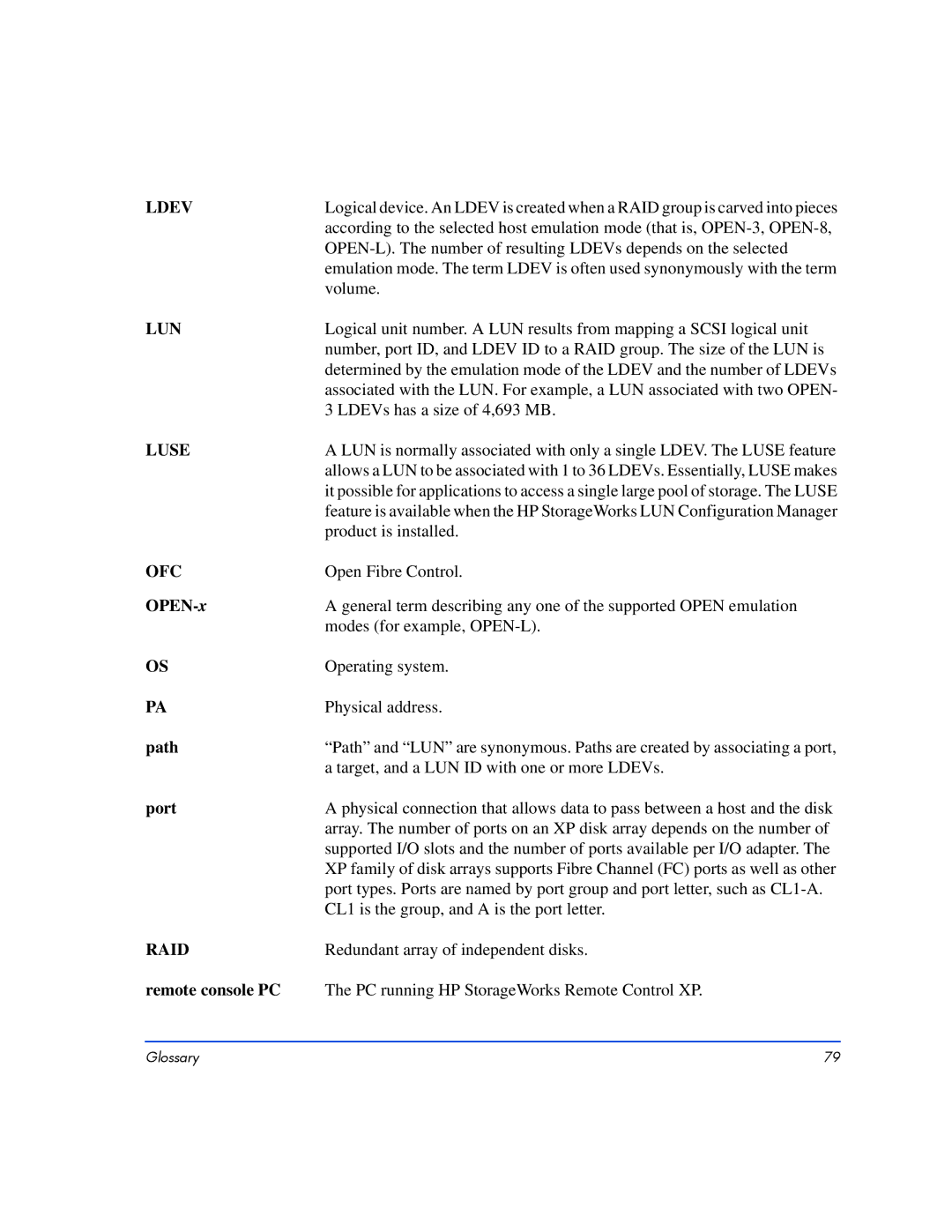LDEV | Logical device. An LDEV is created when a RAID group is carved into pieces |
| according to the selected host emulation mode (that is, |
| |
| emulation mode. The term LDEV is often used synonymously with the term |
| volume. |
LUN | Logical unit number. A LUN results from mapping a SCSI logical unit |
| number, port ID, and LDEV ID to a RAID group. The size of the LUN is |
| determined by the emulation mode of the LDEV and the number of LDEVs |
| associated with the LUN. For example, a LUN associated with two OPEN- |
| 3 LDEVs has a size of 4,693 MB. |
LUSE | A LUN is normally associated with only a single LDEV. The LUSE feature |
| allows a LUN to be associated with 1 to 36 LDEVs. Essentially, LUSE makes |
| it possible for applications to access a single large pool of storage. The LUSE |
| feature is available when the HP StorageWorks LUN Configuration Manager |
| product is installed. |
OFC | Open Fibre Control. |
| A general term describing any one of the supported OPEN emulation |
| modes (for example, |
OS | Operating system. |
PA | Physical address. |
path | “Path” and “LUN” are synonymous. Paths are created by associating a port, |
| a target, and a LUN ID with one or more LDEVs. |
port | A physical connection that allows data to pass between a host and the disk |
| array. The number of ports on an XP disk array depends on the number of |
| supported I/O slots and the number of ports available per I/O adapter. The |
| XP family of disk arrays supports Fibre Channel (FC) ports as well as other |
| port types. Ports are named by port group and port letter, such as |
| CL1 is the group, and A is the port letter. |
RAID | Redundant array of independent disks. |
remote console PC | The PC running HP StorageWorks Remote Control XP. |
Glossary | 79 |
